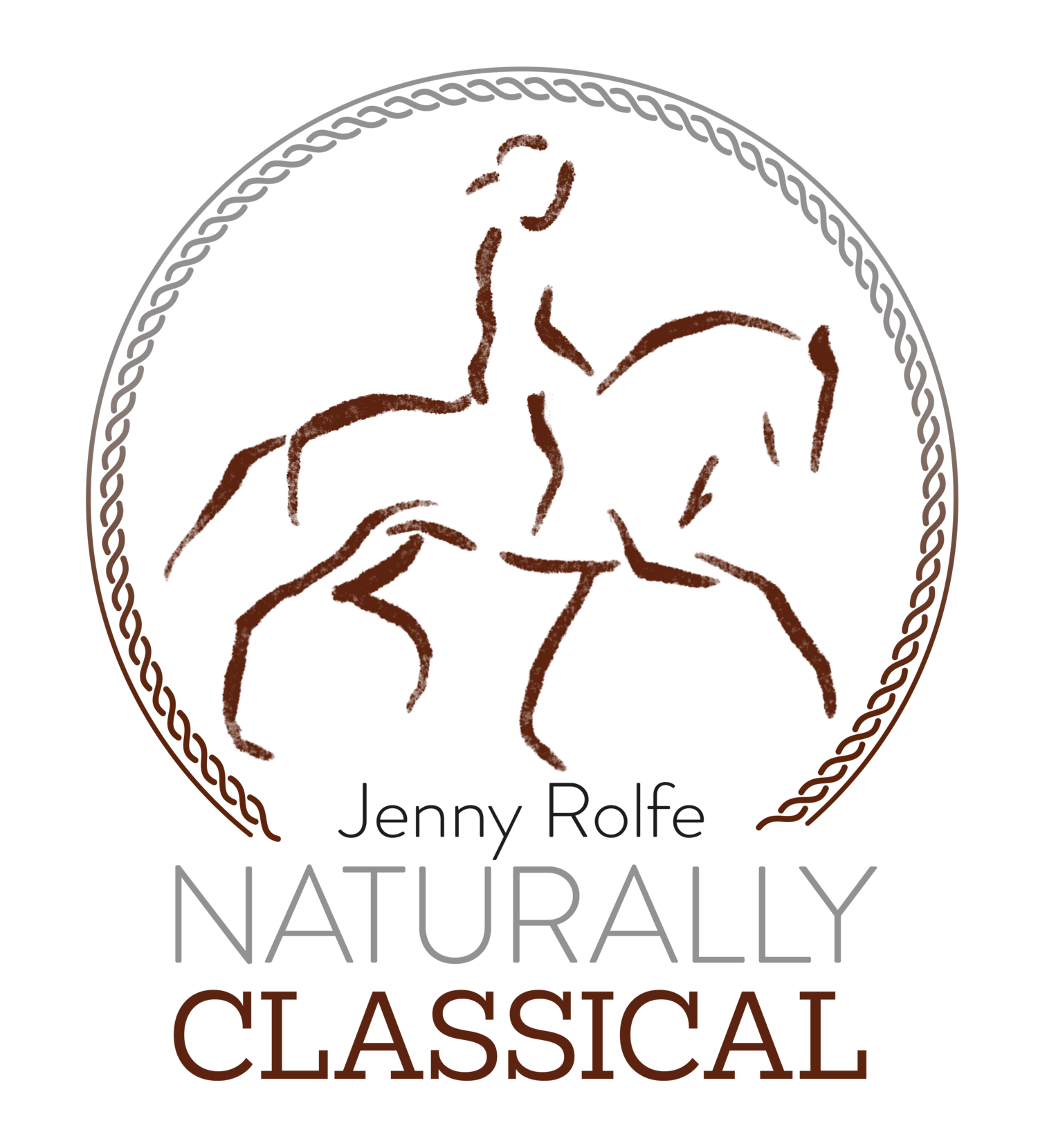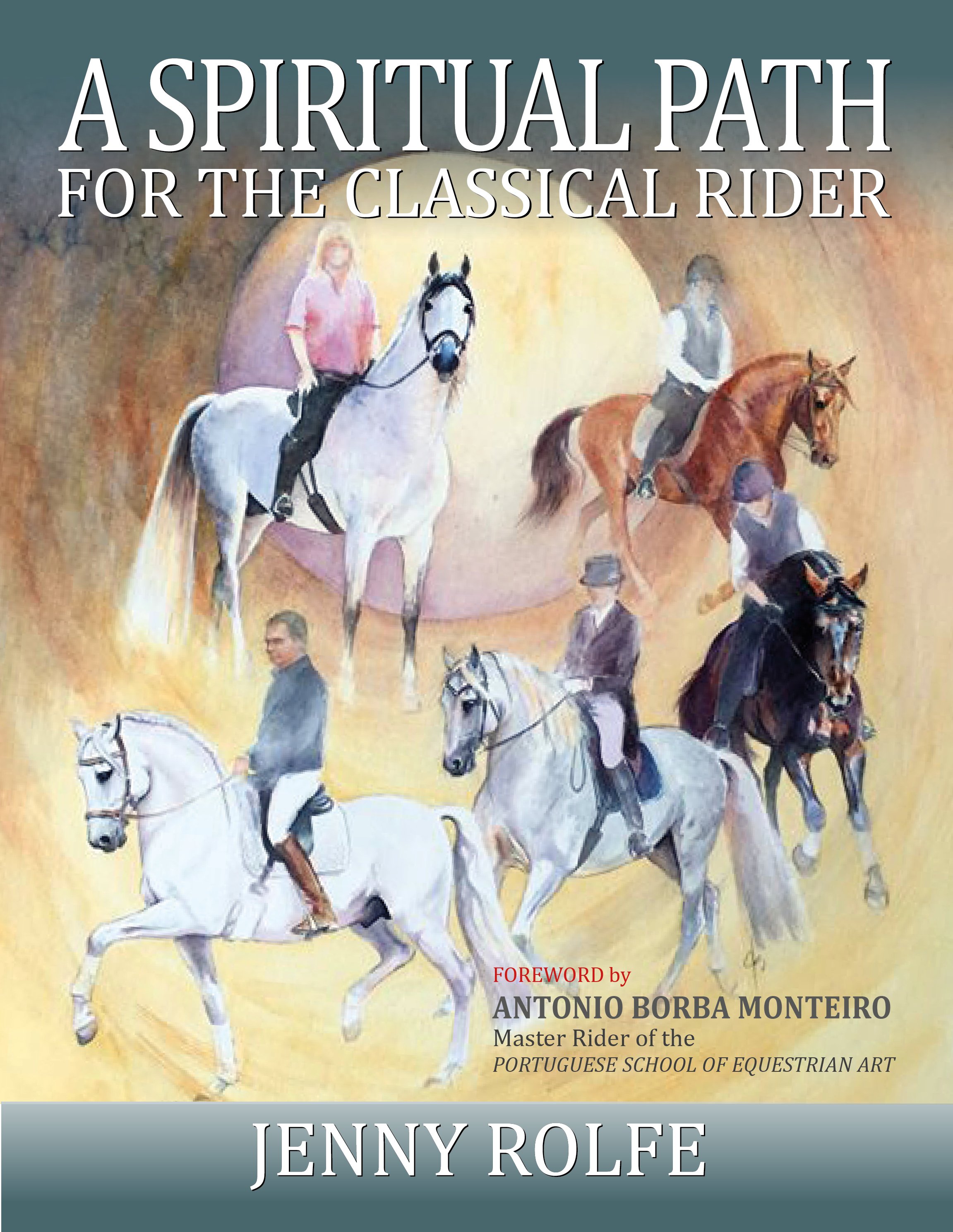A SPIRITUAL PATH FOR THE CLASSICAL RIDER
From the earliest days with Red I was trying to understand him to gain his confidence and for me to feel I could equally trust him. We had our ups and downs and it became clear that he could be quite high energy and easily distracted in the school. Every sound or movement going on around him seemed to divert his mind, very quickly.
Also when I mounted each day he would always try to move off hastily, so lessons took time as we convinced him that life was not to be lived in the fast lane, but to stand quietly, before and during the lessons.
I found the loose work really intrigued Red. He loved it. Very quickly he responded to my inward breath to halt and I only had to think of taking a deeper exhalation and he was off. Over time I have realised how sensitive he can be and if I had been too harsh with him at first, when his concentration was lacking, it could have escalated into a huge drama. It has taken time for him to build trust in me and understand the acceptable boundaries within our communication. For instance when leading him he could be confrontational. He would toss his head and become a little challenging but over time I would lead him around on the lightest rope, by my side. He now rarely tries to forge ahead or lag behind but he quietly walks along by my side.
These may seem to be basic lessons but if the horse doesn’t show respect from the ground then the chance of subtle communication when under saddle, will be more remote. A relationship is a relationship, pure and simple, whether we are riding, working at liberty or just being together. The relationship we build from the ground will be the foundation of empathy and trust we continue to explore once in the saddle.
Here are a few examples of how I met with some of Red’s challenges. I was looking for ways to avoid direct confrontation which meant I needed to change his pattern of thought.
In the early days he would lead fairly quietly but when we arrived at a certain place along the drive he would play up. This particular place seemed to be a trigger for his dominant behaviour. I think the ground fell away to the left side and maybe at that point I seemed smaller to him but over a few days, this became a new pattern of unwanted behaviour.
At times like this you have choices. Do you meet the challenges head on or use your intuition to encourage a new pattern of behaviour? I did keep him out of my space. His assertion demanded my more assertive response. Sometimes we need to act quickly to maintain our herd status and gain respect. If the horse challenges us then a battle can ensue if we are not thoughtful in our responses. Stallions act out assertive behaviour within the herd and this role play can soon become a more dangerous game between human and horse.
When I realised there was a connection between his change in behaviour and a place along the path, I decided to take a slightly different route towards the shepherds hut where I placed a bucket on a nearby table which I knew would take his attention. This worked well as the new pattern of behaviour altered, as his thoughts were elsewhere. He forgot about that disruptive place as he focused on other things. Soon I was leading him down the normal route with no repetition of unwanted behaviour. We had changed his pattern of thought.
Similar patterns of behaviour can also occur in the school. Imagine there is a corner where your horse seems unsettled and spooky. If you decide to react with more leg and whip the energy levels will escalate and create more insecurity for you both.
I found with my stallion Red that there was a rather spooky place where he would try and speed up. So I decided before we arrived at this point, to ask Red, to slow down into a walk. I would repeat this over several days, which started to change his pattern of thought. I was then able to continue at trot without him thinking of changing his speed.
I have found that creating new thought patterns is at the heart of successful training . I avoid confrontation whenever possible, but sometimes with a stallion you do have to engage with his behaviour and rather assertively call the tune. Assertion is not aggression and I do not use punishment in anger to create fear. I do not inflict any harm and pain but I do expect respect. When we engage in a relationship with a horse, we are responsible for safety and therefore it is good to know that the horse will be prepared to listen. We have to take responsibility for both our own and his behaviour. Our horse can learn boundaries of acceptable behaviour and we both need to communicate within these boundaries. Neither the human or horse should be allowed to inflict fear or aggressive dominance. The journey is to find the place of empathy, where mutual trust can grow and mature into a deep bond of friendship.

